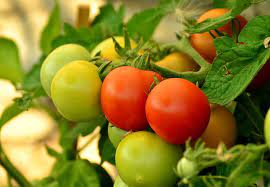
Firstly, introducing Auscrops, a wonderful market vending company bridging farmers and customers together through market vendors. Click here to find out more about When to Plant Tomatoes as well fruit and vegetable offers.
When to Plant Tomatoes
Tomatoes are one of the most popular vegetables (or rather, fruits) in the world. They can be eaten raw, cooked, or incorporated into various dishes. However, growing tomatoes is not as easy as it may seem. One of the most crucial factors in planting tomatoes is timing. In this comprehensive guide, we will discuss everything you need to know about when to plant tomatoes.
Know your zone
Different regions have different climates and temperatures. Thus, it is important to know which planting zone you belong in so you can determine the best time to plant tomatoes. For instance, people living in warmer areas with a longer growing season may be able to plant tomatoes earlier than those living in colder climates. It is advisable to check with your local agricultural extension to know your zone.
Determine the type of tomatoes you want to grow
Tomatoes come in different varieties, and each has a preferred planting time. Generally, there are two types of tomatoes: determinate and indeterminate. Determinate tomatoes have a shorter growing season and will yield all their fruits at once. Indeterminate tomatoes, on the other hand, have a longer growing season and will continue bearing fruits until the first frost. You should choose the type of tomatoes that align with your preferences and the amount of time you can dedicate to caring for them.
Wait for the frost to pass
They thrive in warmer temperatures, so it is best to plant them after the last frost of the season. In most areas, the frost usually occurs in early spring, so planting tomatoes after the last frost means that they will have a longer growing season. Planting tomatoes prematurely can result in stunted growth and poor fruit production.
Consider your planting method
There are two primary methods for planting tomatoes: seed and transplant. Starting your tomato plant from seeds takes longer but gives you more control over the growth process. The advantage of transplanting is that it takes less time and guarantees you a better yield. When planting by transplant, it is best to wait until the weather has warmed up enough to prevent shock to the plants.
Watch the weather
Even after planting, it is essential to monitor the weather and adjust accordingly. Tomatoes need plenty of sunshine and water but can also suffer from extreme heat, strong winds, or heavy rainfall. Regularly check your garden for pests or signs of disease, and apply appropriate measures to protect your plants.
Conclusion:
In summary, knowing when to plant tomatoes can be a determining factor in the success of your gardening endeavors.
Click here to read similar articles.
 Français
Français 











